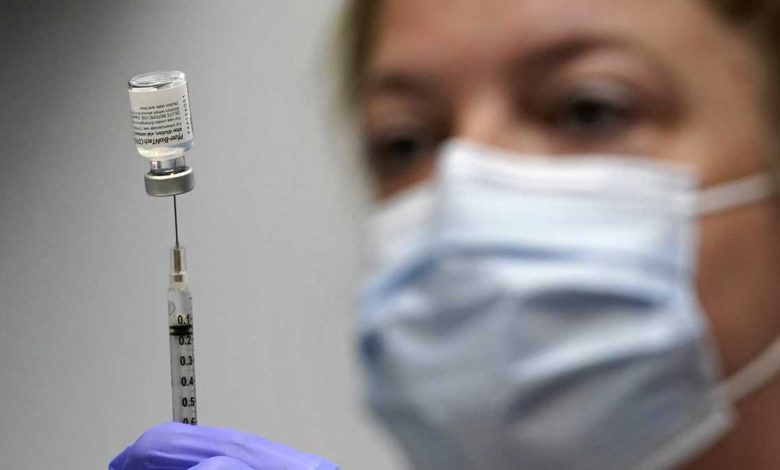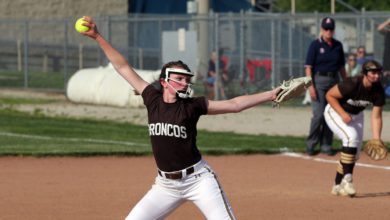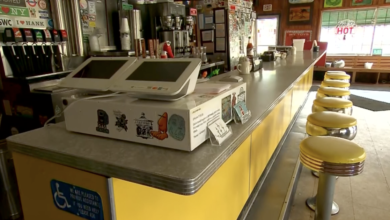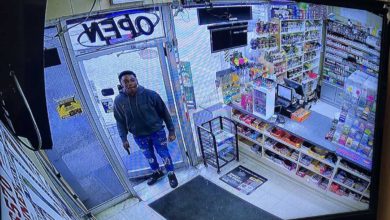

Three-quarters of eligible Americans have received at least one dose of a COVID-19 vaccine and some are now able to receive an additional booster shot. But the virus still poses a great threat to more than 70 million people who remain unvaccinated."The most vulnerable are those unvaccinated," said Dr. Rochelle Walensky, the director of the Centers for Disease Control and Prevention.The CDC on Friday approved a third shot of Pfizer's COVID-19 vaccine to an expanded group of Americans."Starting today, if you are six months out from your last dose of the Pfizer vaccine, you are eligible for a booster if you fall into one of three high-risk groups," U.S. Surgeon General Dr. Vivek Murthy said during a briefing."Number one: You are 65 or older. Number two: You have a medical condition that puts you at high risk of severe illness with COVID and these conditions include obesity, diabetes, high blood pressure, chronic kidney disease and others. And Number three: You work or live in a setting where you are at high risk of exposure to COVID. This includes health care workers, teachers, those living in shelters or prisons and grocery store workers," Murthy said.Walensky acknowledged that even with more Americans becoming eligible, the country must ramp up initial vaccination numbers for the pandemic to subside."I want to be clear: We will not boost our way out of this pandemic," she said Friday.The U.S. has fully vaccinated more than 55% of all residents as of Friday, CDC data shows, while 75% of the vaccine-eligible received at least one dose of inoculation.A recent CNN analysis showed the average rate of COVID-19 deaths in the 10 least vaccinated states was more than four times higher over the past week than the rate in the 10 most vaccinated states.CDC vaccine advisers had recommended that booster shots should be made eligible for people over 65 and those with health risks — stopping short of expanding that threshold to include those who may be disproportionally exposed to the virus at their jobs. But Walensky moved to account for the occupational exposure group in her guidance."Some people really voted ... with enthusiasm to say our health care workers, our frontline workers, people who were vaccinated early, people who work in congregate settings, in correctional facilities, grocery workers, really do merit the vaccine," Walensky told CNN's Erin Burnett. "The question wasn't 'yes or no,' the question was 'wait or do now,'" she added.Ultimately, the decision for boosters was about "providing rather than withholding access" and the need to protect society as a whole, Walensky explained.Boosters are ready nowThe boosters are already available, with CVS Health announcing Friday that nearly 6,000 of its locations started offering appointments for a third dose of the Pfizer vaccine.And because federal health officials have only authorized Pfizer's booster shot, "individuals who initially received the Moderna or Johnson & Johnson (Janssen) COVID-19 vaccine are not eligible for a booster at this time," the company said.Those who choose to go for the booster shot will be asked to "self-attest to their eligibility" outlined by public health officials, CVS said. They also must be recipients of Pfizer's initial two doses.Walensky reassured those who received Moderna or J&J vaccines that health officials haven't forgotten them and are working to determine next steps."We will, with similar urgency, evaluate the available data in the coming weeks to swiftly make additional recommendations for other populations at risk, and people who received the Moderna and J&J vaccines."Murthy, the U.S. surgeon general, noted that the U.S. Food and Drug Administration "is working with Moderna and J&J to get and process their data as quickly as possible with the goal of making booster recommendations for Moderna and J&J recipients in the coming weeks. This is a high, high priority."In California, Los Angeles County on Friday also began offering the booster shots to its residents who show proof of vaccination and affirm their eligibility, the county's public health department said in a news release. People who live in long-term care facilities, are over 18 with underlying medical conditions or are frontline workers are also eligible for the third dose, department officials said.Many schools closed due to COVID-19 outbreaks, study findsThe headaches facing school officials and parents were underlined in a study released Friday on the impact so far of the pandemic on in-person learning.About 1,800 schools closed between Aug. 1 and Sept. 17 because COVID-19 cases were detected, which affected the education and well-being of 933,000 students, according to the CDC study.Nearly 60,000 teachers in 44 states were also affected by closures, and the number of closures was highest in the South, the study found.Examining data from 8,700 districts nationwide, the CDC study found that "the largest number of districts with full remote learning (14) were in the West Census Region, followed by the South (11). Seven Midwest and two Northeast districts offered full remote learning."The study noted that the timing of return to school may be a factor in school closures because the schools in the South returned earlier in August than other parts of the country — which typically start in late August or early September.COVVID-19 outbreaks forced 300 Tennessee schools to close, the study shows, noting that was the most in the nation — followed by Georgia, Kentucky, Texas and South Carolina.The CDC recommends that people in schools wear masks even if they're vaccinated as well as screen testing and physical distancing to mitigate the spread of COVID-19.
Three-quarters of eligible Americans have received at least one dose of a COVID-19 vaccine and some are now able to receive an additional booster shot. But the virus still poses a great threat to more than 70 million people who remain unvaccinated.
"The most vulnerable are those unvaccinated," said Dr. Rochelle Walensky, the director of the Centers for Disease Control and Prevention.
The CDC on Friday approved a third shot of Pfizer's COVID-19 vaccine to an expanded group of Americans.
"Starting today, if you are six months out from your last dose of the Pfizer vaccine, you are eligible for a booster if you fall into one of three high-risk groups," U.S. Surgeon General Dr. Vivek Murthy said during a briefing.
"Number one: You are 65 or older. Number two: You have a medical condition that puts you at high risk of severe illness with COVID and these conditions include obesity, diabetes, high blood pressure, chronic kidney disease and others. And Number three: You work or live in a setting where you are at high risk of exposure to COVID. This includes health care workers, teachers, those living in shelters or prisons and grocery store workers," Murthy said.
Walensky acknowledged that even with more Americans becoming eligible, the country must ramp up initial vaccination numbers for the pandemic to subside.
"I want to be clear: We will not boost our way out of this pandemic," she said Friday.
The U.S. has fully vaccinated more than 55% of all residents as of Friday, CDC data shows, while 75% of the vaccine-eligible received at least one dose of inoculation.
A recent CNN analysis showed the average rate of COVID-19 deaths in the 10 least vaccinated states was more than four times higher over the past week than the rate in the 10 most vaccinated states.
CDC vaccine advisers had recommended that booster shots should be made eligible for people over 65 and those with health risks — stopping short of expanding that threshold to include those who may be disproportionally exposed to the virus at their jobs. But Walensky moved to account for the occupational exposure group in her guidance.
"Some people really voted ... with enthusiasm to say our health care workers, our frontline workers, people who were vaccinated early, people who work in congregate settings, in correctional facilities, grocery workers, really do merit the vaccine," Walensky told CNN's Erin Burnett. "The question wasn't 'yes or no,' the question was 'wait or do now,'" she added.
Ultimately, the decision for boosters was about "providing rather than withholding access" and the need to protect society as a whole, Walensky explained.
Boosters are ready now
The boosters are already available, with CVS Health announcing Friday that nearly 6,000 of its locations started offering appointments for a third dose of the Pfizer vaccine.
And because federal health officials have only authorized Pfizer's booster shot, "individuals who initially received the Moderna or Johnson & Johnson (Janssen) COVID-19 vaccine are not eligible for a booster at this time," the company said.
Those who choose to go for the booster shot will be asked to "self-attest to their eligibility" outlined by public health officials, CVS said. They also must be recipients of Pfizer's initial two doses.
Walensky reassured those who received Moderna or J&J vaccines that health officials haven't forgotten them and are working to determine next steps.
"We will, with similar urgency, evaluate the available data in the coming weeks to swiftly make additional recommendations for other populations at risk, and people who received the Moderna and J&J vaccines."
Murthy, the U.S. surgeon general, noted that the U.S. Food and Drug Administration "is working with Moderna and J&J to get and process their data as quickly as possible with the goal of making booster recommendations for Moderna and J&J recipients in the coming weeks. This is a high, high priority."
In California, Los Angeles County on Friday also began offering the booster shots to its residents who show proof of vaccination and affirm their eligibility, the county's public health department said in a news release. People who live in long-term care facilities, are over 18 with underlying medical conditions or are frontline workers are also eligible for the third dose, department officials said.
Many schools closed due to COVID-19 outbreaks, study finds
The headaches facing school officials and parents were underlined in a study released Friday on the impact so far of the pandemic on in-person learning.
About 1,800 schools closed between Aug. 1 and Sept. 17 because COVID-19 cases were detected, which affected the education and well-being of 933,000 students, according to the CDC study.
Nearly 60,000 teachers in 44 states were also affected by closures, and the number of closures was highest in the South, the study found.
Examining data from 8,700 districts nationwide, the CDC study found that "the largest number of districts with full remote learning (14) were in the West Census Region, followed by the South (11). Seven Midwest and two Northeast districts offered full remote learning."
The study noted that the timing of return to school may be a factor in school closures because the schools in the South returned earlier in August than other parts of the country — which typically start in late August or early September.
COVVID-19 outbreaks forced 300 Tennessee schools to close, the study shows, noting that was the most in the nation — followed by Georgia, Kentucky, Texas and South Carolina.
The CDC recommends that people in schools wear masks even if they're vaccinated as well as screen testing and physical distancing to mitigate the spread of COVID-19.
Source link








